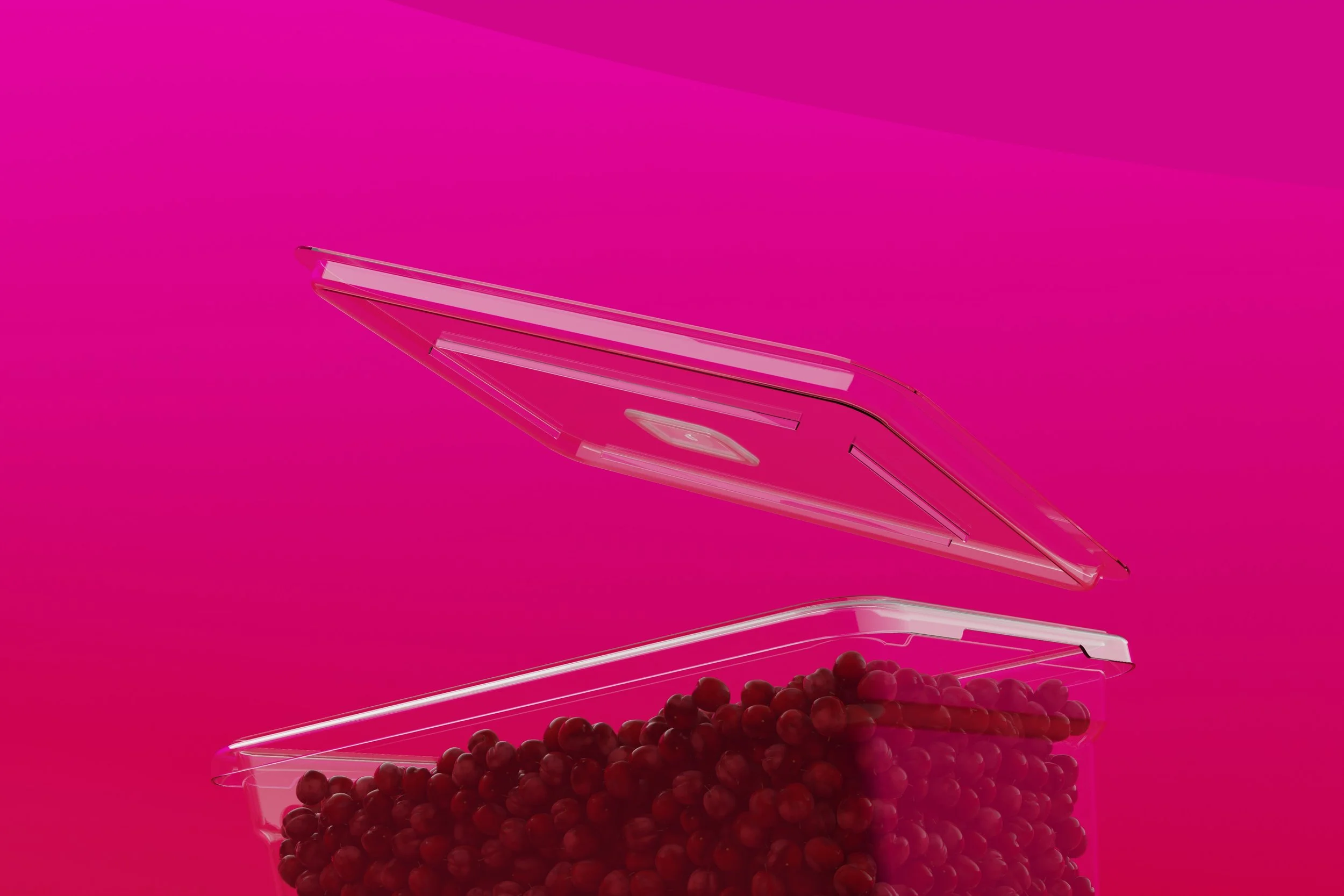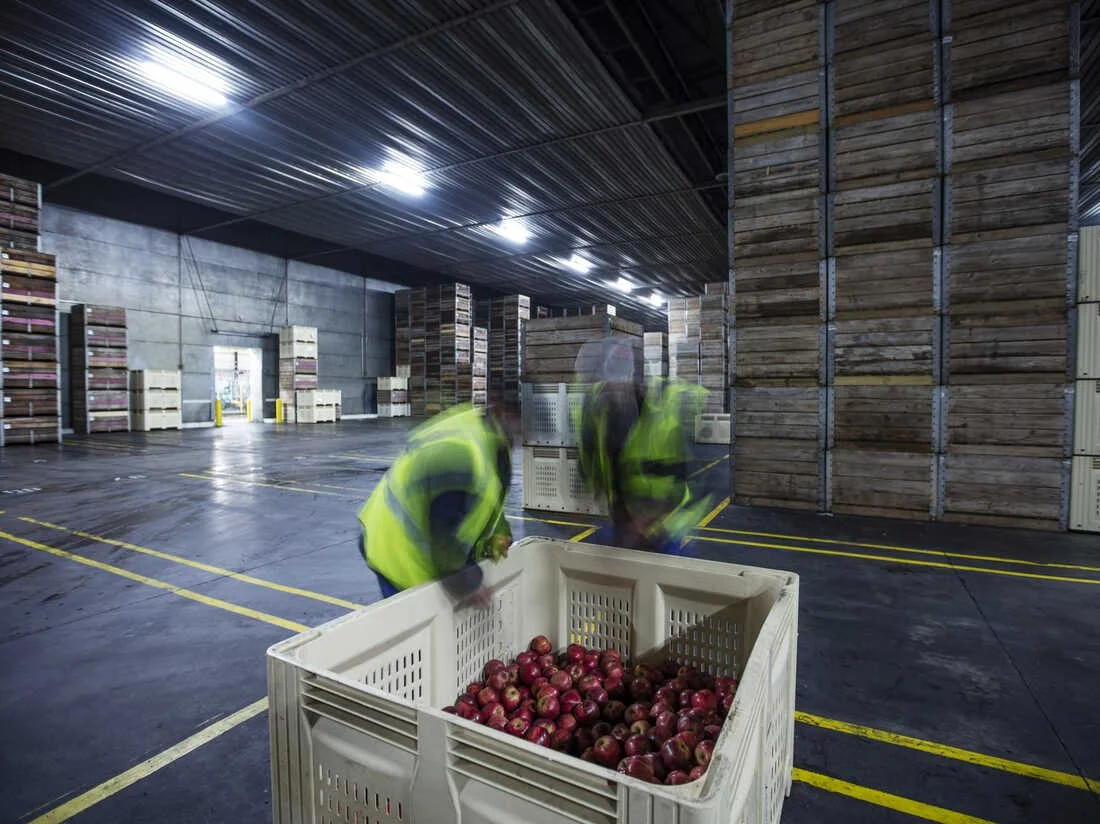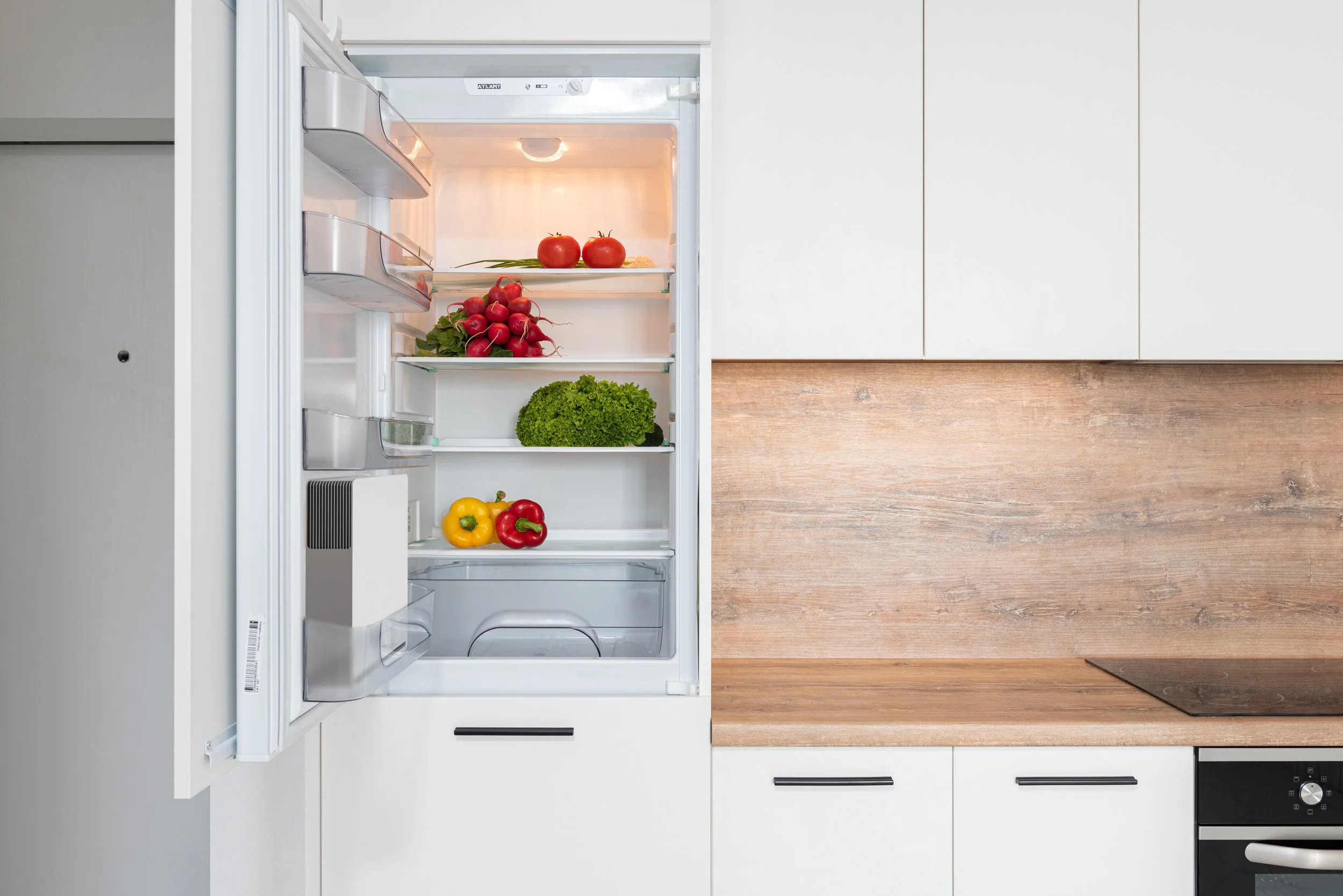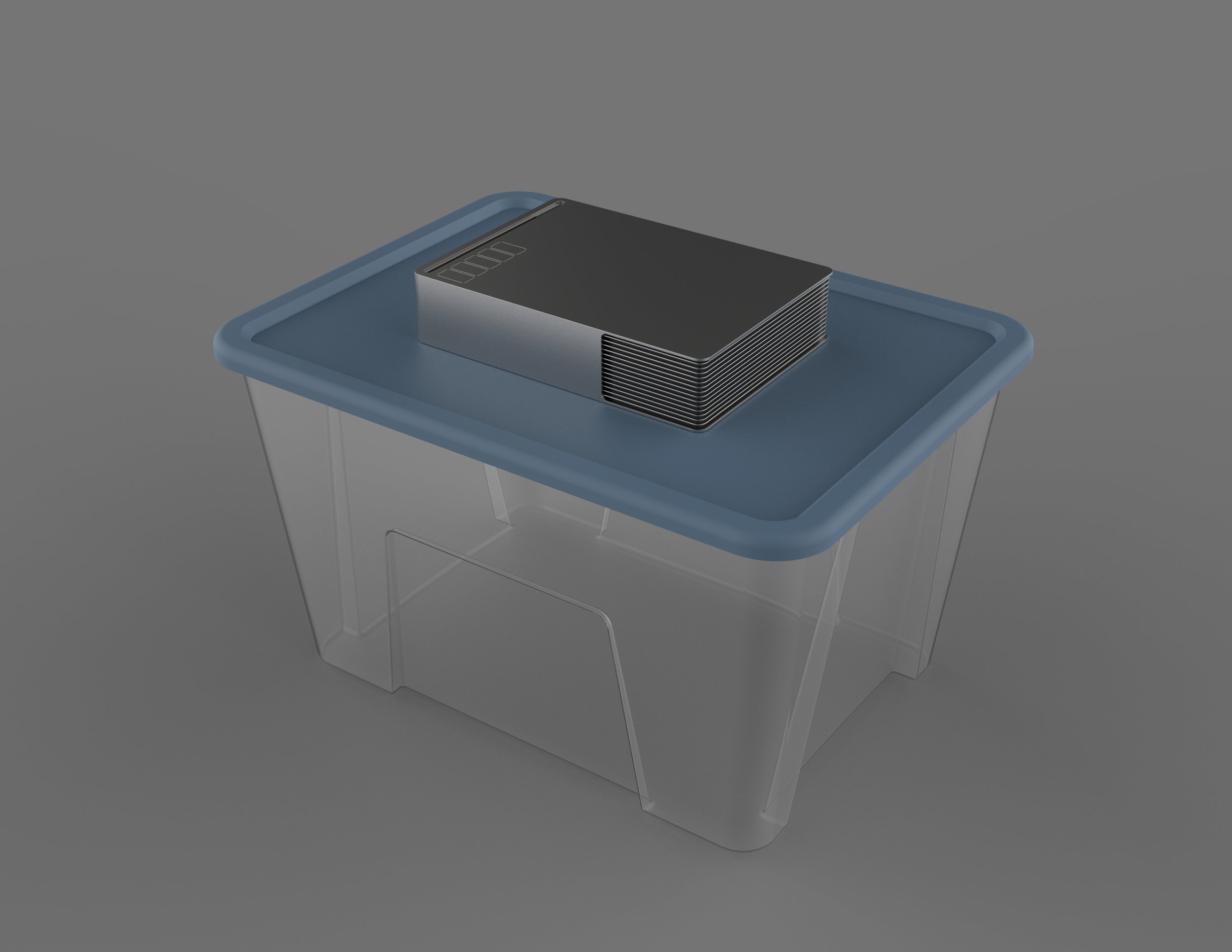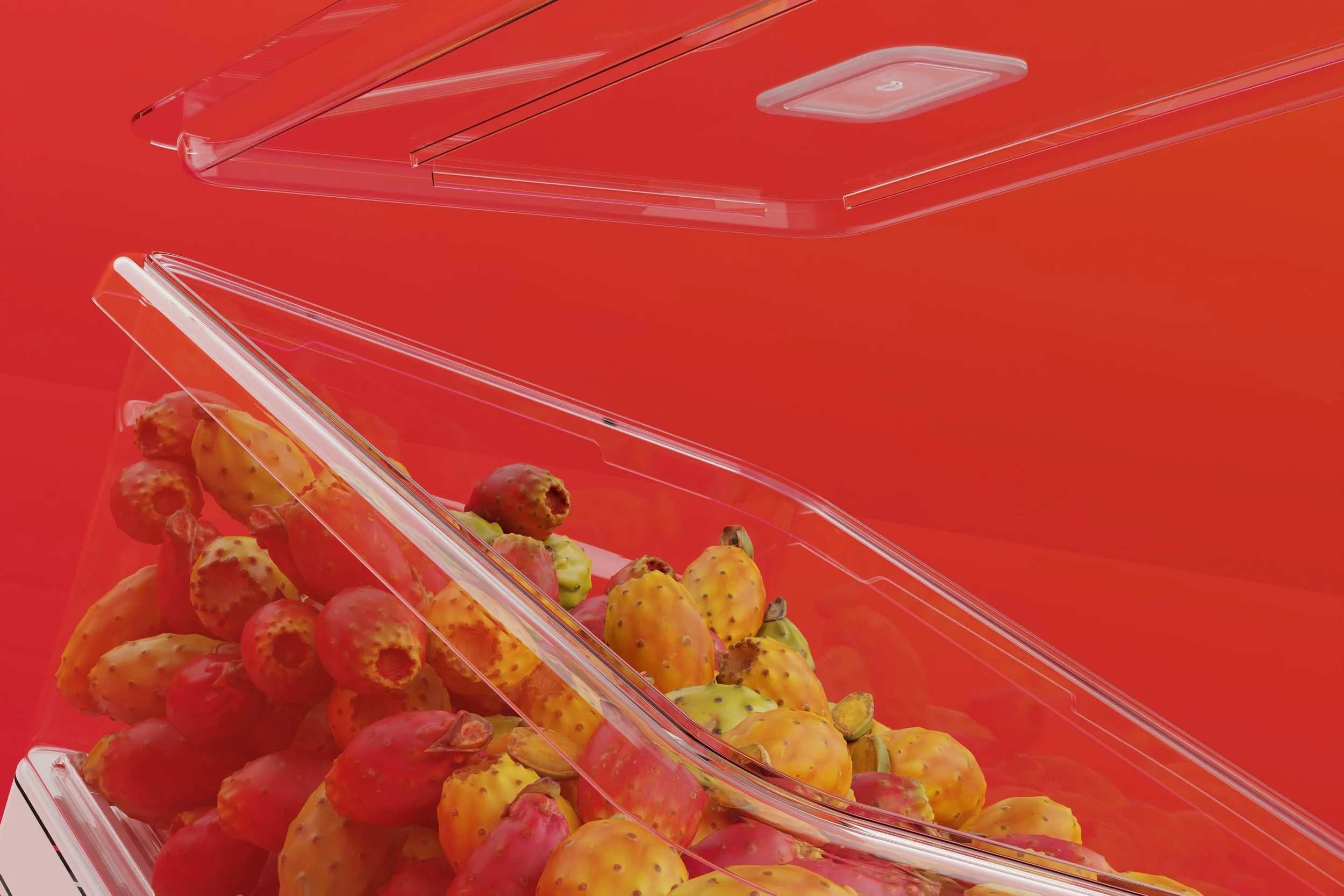
Background
I was selected for a Crocker Innovation Fellowship, through this program, I worked on an interdisciplinary team with students studying entrepreneurship, microbiology, mechanical engineering, and computer engineering. Together, through extensive design research, we created Prism, a food preservation solution for restaurants and food pantries.
It’s an IOT variant of traditional food storage boxes used in walk-in coolers for fresh frits and vegetables, that uses controlled atmosphere techniques to, on average, double the lifespan of fresh fruits and vegetables.
We work as a highly cross-functional team but my role on the team was largely to be responsible for design research, design of the physical product, branding, digital and web design, and advertising.
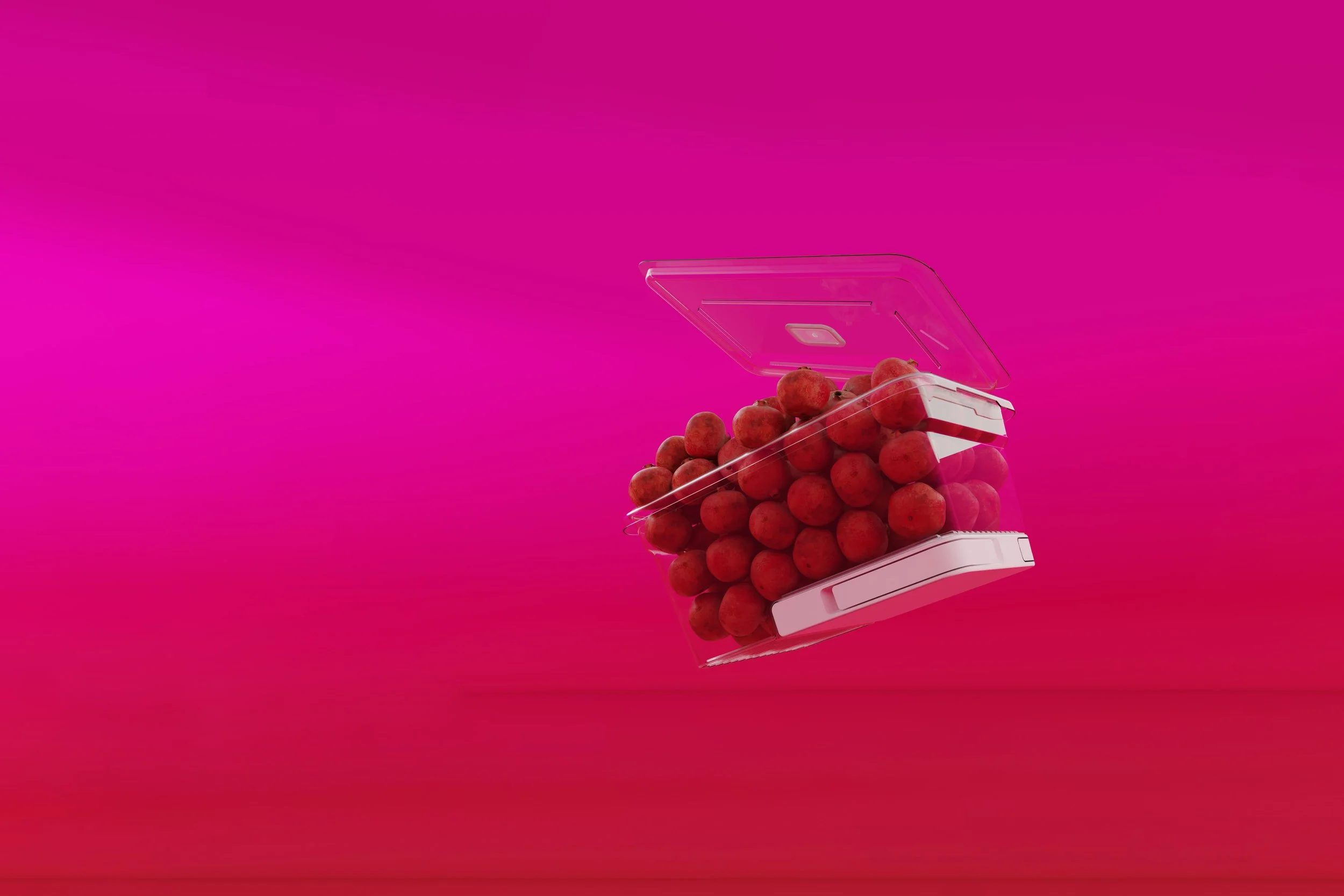
Prism bins extend the life of fresh produce
Controlled atmosphere in a walk-in fridge
2.5x average shelf life increase
IoT enabled
Industrial-scale preservation techniques, made available to small businesses

Keep produce fresh for longer, no preservatives necessary
Controlled atmosphere preserves fruits, vegetables, and fungi by slowing down cellular respiration rather than by using chemical preservatives.
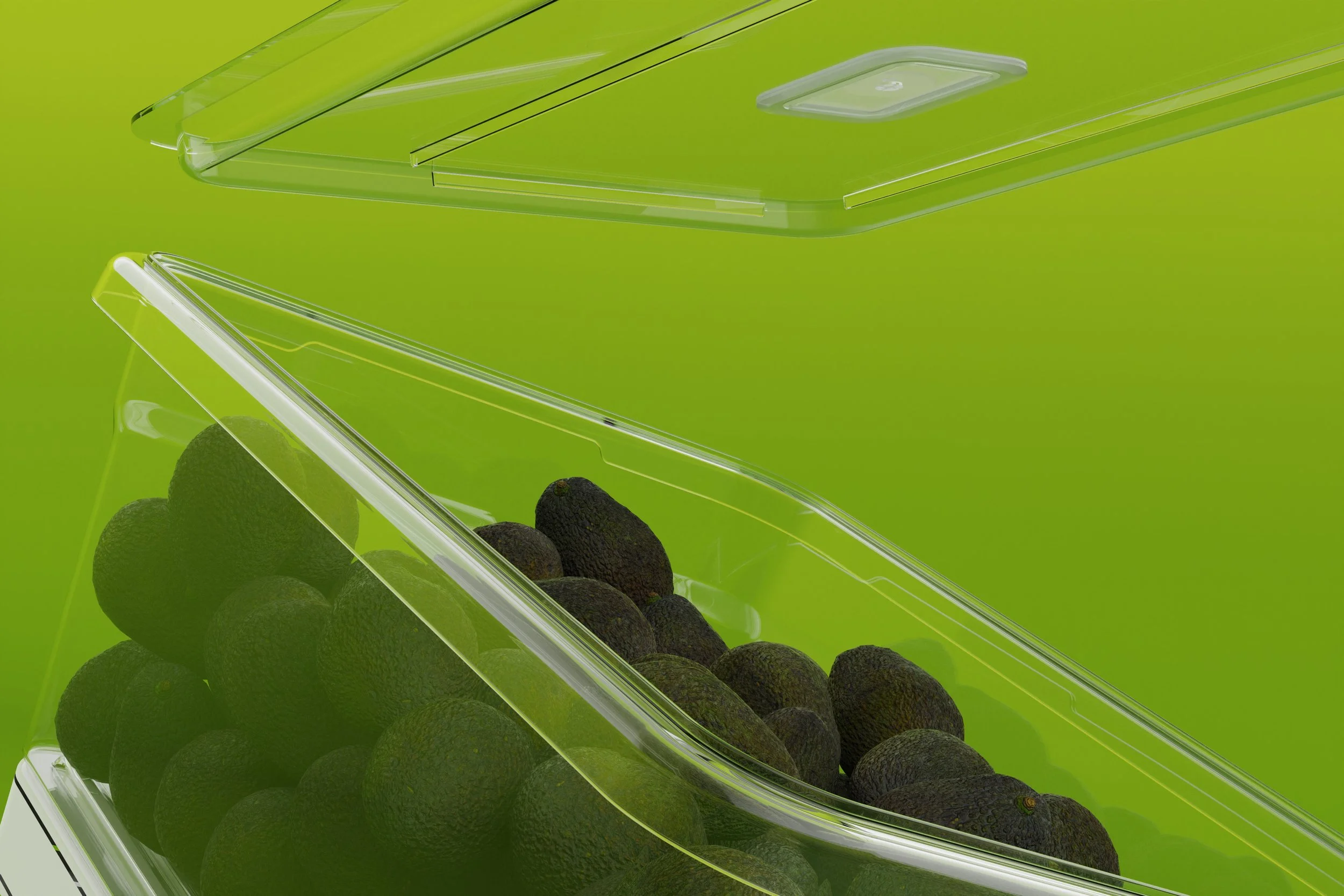
IoT functionality to meet each business’s needs
Prism’s IoT capabilities enable it to fine-tune the gas composition of a bin to fit the produce being used and to help with inventory management. The device’s gas and weight sensors enable it to collect valuable data and make it available to clients’ kitchens.
Scroll to see our process
First Sprint
We started the project off with a 2-week sprint where we had to go from conducting research to a functional (for demonstration purposes) solution. In this period, we talked to a dozen users and created our first attempt at a food preservation solution: Blanc.
Blanc was a device designed to UV sterilize the produce drawer of a typical consumer refrigerator. We also created our first iteration brand to go with it.
Controlled Atmosphere (CA)
Our first sprint was useful in getting some early research and learning together as a new team, but we knew there were a number of apparent weaknesses in our solution. UV light can be dangerous, even blinding, and it wouldn’t sterilize behind an object or through packaging. Also, while pathogenic spoiling is a problem, natural spoilage is a big source of food waste that is being left unaddressed. We saw a strong need for a designed solution to the food waste issue across demographics of consumers and businesses, and we wanted to explore that.
As we did more research, we came across controlled atmosphere (also known as CA), a long-term storage method used on large industrial scales that is relatively inaccessible to consumers and smaller businesses. Controlled atmosphere facilities store fresh produce in bulk in a sealed warehouse where the proportion of Oxygen is reduced, and the Nitrogen and Carbon dioxide levels are increased, which slows cellular respiration. This enables consumers to have fresh apples year-round, even if they aren’t in season.
Preliminary Concepts
From initial research with Facebook groups, we saw the potential for this technology to meet the needs of people dealing with the consequences of food waste. The need was strong, but we hadn’t yet gotten the depth of research insights we needed to design a quality product. To address this, we designed 3 different rough concepts and talked to a broad range of people to see who this could be of use to, and how it could be of use, and how strongly they felt a need to reduce their food waste.
CA Fridge Insert
An IoT controlled atmosphere device that converts a refrigerator into controlled atmosphere storage.
Design Feedback:
Popular with consumers and gardeners and of mild interest to florists
Most refrigerators cycle their air, so likely not very feasible for the user to install it
Users would prefer to install the device on top of or behind their fridge so they don’t lose valuable storage space
CA Mobile Cooler
An IoT controlled atmosphere cooler that enables a mobile controlled atmosphere for the transport of fresh produce.
Design Feedback:
Popular with farmers and gardeners with high-yield trees or large gardens (they don’t sell their produce, so they don’t use it faster than it spoils)
Would be suitable for farmers’ markets, especially since the exposure to heat at these markets is detrimental to the produce
DIY CA Storage Bin
An IoT controlled atmosphere device that can be installed on a bin that goes inside a walk-in cooler.
Design Feedback:
Popular with farmers and some restauranteurs (they already have walk-in coolers they store produce in)
Wouldn’t place any real value on installing devices to their bins on their own
Bins need to be stackable; their storage space is often very limited
Bins need to conform to standard sizing; their shelving is designed to fit preexisting standards
Plastic must FDA food safe
Sempreverde Storage Bin
An IoT, controlled atmosphere food storage bin for walk-in coolers in restaurants. It’s stackable and conforms to the preexisting sizing standards in the restaurant industry.
Design Feedback:
The electronic device component sticks out too much from the side
Current bins often end up with watery spoilage at the bottom of the bin; if reducing waste is a priority, this should be addressed as well
The bin needs more design considerations for being carried/moved
Finding our persona
Throughout the duration of the fellowship, we conducted design research with dozens of people from a variety of professional backgrounds, including restauranteurs, florists, farmers, gardeners, food pantry administrators, and hotel/lodge managers. As the goal of this fellowship is primarily entrepreneurial, we worked to learn about the variety of design challenges these industries present and evaluate which felt the pain of these unmet needs the most deeply.
The more we followed our research, the more we found a strong need and willingness to pay in commercial sectors, especially where we found our product could reduce the strain caused by tight profit margins.
Consumers
January 2023
Restauranteurs
March 2023
Restaurants + Food banks
October 2023
Food service with supply constraints
November 2023 — Present
Meet Theo
Age: 45-65
Passion for the natural world
Runs a hotel/lodge in a remote area
Serves high-end clients
Theo’s clients come to his lodge to get away from high-paying, but high-stress jobs to escape and have once-in-a-lifetime experiences in nature. Theo enjoys facilitating these experiences by organizing fishing, hunting, and hiking opportunities, and then, to cap it all off, he provides amazing fine dining.
Unfortunately, due to the remoteness of his location, sourcing ingredients for his meals often proves quite difficult.
In some cases, these hotels and lodges need to have their ingredients flown in, and if they can’t fit it all on the same plane, they pay extra per pound. In other cases, they have to be trucked long distances on unpaved roads.
The issues don’t stop for Theo when the food arrives because it’s quite common for suppliers to short-change him. He’s stuck with what he has because the nearest replacements for missing ingredients can be hours or even days away, and he’ll have to adapt his menu with very little notice.
Final Concept
Prism Storage Bin
Brand Development
Iteration 1:
Blanc, the first iteration of our brand, was created for our original design sprint, where we made a UV sterilization device for consumer refrigerators. It was mostly built around an emotional appeal to the desire for sterility and cleanliness in our produce. It was less of a complete brand identity, and more of an early exploration of creating a brand for our product.
Iteration 2:
Sempreverde was the first full brand identity I created. This was for the purpose of creating a smoke test website to gauge interest and test out preorders. This was a useful tool in helping us to refine our product and pricing.
Iteration 3:
Prism was the final brand identity I created. The Prism brand focuses on the narrative of harvest to consumption, with the user experiencing the vibrance and freshness of the produce through of the natural preservation our product. The final visual identity features imagery that evokes the vivid flavors and colors of the fruits and vegetables.
The brand guide includes horizontal, stacked, and wordmark logo options.
